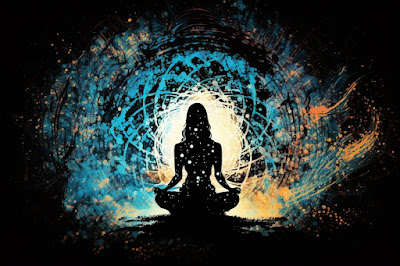Introduction
These days, the meanings and restorative properties of chakras are a topic of interest among many people. The whole concept of rahimsutra chakras has been currently redefined in Oriental thinking together with energies that guard it. In this article, we will be discussing the definition of chakras and certain doctrines concerning energy centers inside the organs.
Table of Contents
Understanding Chakras
The Origins of Chakras
The Seven Major Chakras
Root Chakra (Muladhara)
Sacral Chakra (Svadhisthana)
Solar Plexus Chakra (Manipura)
Heart Chakra (Anahata)
Throat Chakra (Vishuddha)
Third Eye Chakra (Ajna)
Crown Chakra (Sahasrara)
Balancing and Activating Chakras
Chakra Meditation
Yoga and Chakras
Crystal Healing for Chakras
The Interconnectedness of Chakras
The Role of Chakras in Overall Well-being
Conclusion
FAQs
Understanding Chakras

Chakras are energy centers within our subtle body that are believed to exist along the spine, in the energetic body from the base to the crown of the head. The word "chakra" originates from Sanskrit meaning a "wheel" or "disc." These energy wheels are thought to spin and regulate the flow of energy throughout our physical, emotional, and spiritual being.
The Origins of Chakras
The theory of chakras can be seen in ancient Indian spiritual teaching, i.e the Vedas and Upanishads. The knowledge of chakras can be traced back there. The esoteric text describes the chakras as key elements in the subtle network of energy channels known as nadis.
The Seven Major Chakras
There are seven major energy channels are associated with specific physical, emotional, and spiritual aspects of our being. Let's explore them one by one:
1. Root Chakra (Muladhara)
The Root Chakra is located at the base of the spine and is associated with grounding, stability, and our basic survival instincts. The stronger the Muladhara, the stronger it forms the foundation upon which all other chakras build.
2. Sacral Chakra (Svadhisthana)
The Sacral Chakra is situated in the lower abdomen and governs our emotions, creativity, and sexuality. It is linked to our ability to experience pleasure and embrace our desires.
3. Solar Plexus Chakra (Manipura)
The Solar Plexus Chakra also known as the power house chakra is found in the upper abdomen and relates to our personal power, confidence, and self-esteem. It is associated with our ability to manifest our intentions and pursue our goals.
4. Heart Chakra (Anahata)
Residing in the center of the chest, The Heart Chakra is associated with feelings of compassion, forgiveness & love. It governs our ability to form meaningful connections and cultivate harmonious relationships.
5. Throat Chakra (Vishuddha)
Linked to communication, self-expression, and authenticity. The Throat Chakra is located at the throat. It helps us to convey our truth to the world and express our thoughts and feelings.
6. Third Eye Chakra (Ajna)
Associated with intuition, insight, and higher awareness. It enhances the way we see and perceive the world and provides us with a greater understanding of our life and the world around us. The third Eye Chakra can be discovered between the brows.
7. Crown Chakra (Sahasrara)
The Crown Chakra is located at the top of the head and represents our spiritual connection and divine consciousness. It is the gateway to higher states of consciousness and spiritual enlightenment.
Balancing and Activating Chakras
Maintaining balance and harmony among the chakras is essential for our overall well-being. Several practices can help balance and activate the chakras:
Chakra Meditation
Meditation focused on the chakras involves visualizing, breathing, and directing energy to specific chakras. This practice helps cleanse and align the energy centers, promoting healing and balance. You can practice chakra music meditation also.
Yoga and Chakras
Yoga poses and specific sequences can target and stimulate the different chakras. By practicing yoga, we can release blockages, increase energy flow, and restore harmony within the chakra system.
Crystal Healing for Chakras
Crystals and gemstones are believed to carry vibrational properties that can positively influence our energy centers. By placing specific crystals on or near the chakras, we can support their healing and activation.
Root Chakra (Muladhara): Red Jasper, Hematite, Smoky Quartz
Sacral Chakra (Svadhisthana): Carnelian, Orange Calcite, Sunstone
Solar Plexus Chakra (Manipura): Citrine, Yellow Jasper, Golden Tiger Eye
Heart Chakra (Anahata): Rose Quartz, Green Aventurine, Rhodonite
Throat Chakra (Vishuddha): Sodalite, Blue Lace Agate, Lapis Lazuli
Third Eye Chakra (Ajna): Amethyst, Labradorite, Selenite
Crown Chakra (Sahasrara): Clear Quartz, Amethyst, Ametrine
The Interconnectedness of Chakras
The chakras are not isolated entities but are interconnected and influence one another. An alteration in one chakra can disturb the balance of the whole body system. Therefore, it is necessary to address imbalances in the energy channels to restore harmony.
The Role of Chakras in Overall Well-being
Balanced and activated chakras contribute to our physical, emotional, and spiritual well-being. When energy flows smoothly through the chakras, we feel more alive, emotionally stable, and have a greater feeling of purpose and contentment.
Conclusion
Chakras are crucial energy centers within our bodies that influence our overall health. Understanding the fact, as well as learning how to balance and activate them, can lead to a more peaceful and meaningful life.
FAQs
What happens if my chakras are imbalanced?
Imbalanced chakras can manifest as physical or emotional disturbances, impacting various aspects of your life. Balancing them can help restore harmony and well-being.
Can anyone balance their chakras?
Yes, anyone can learn to balance their chakras. It requires self-awareness, intention, and the willingness to explore practices like meditation, yoga, and energy healing.
How often should I work on my chakras?
The frequency of chakra work varies from person to person. Regular practice is beneficial, but listen to your intuition and adjust according to your needs.
Are there other chakras apart from the seven major ones?
While the seven major chakras are widely recognized, some traditions acknowledge additional chakras that are considered to be part of an extended energy system.
Can chakras be scientifically proven?
The existence and significance of chakras are predominantly discussed within spiritual and alternative healing communities. Scientific research on chakras is limited but evolving.
In conclusion, working and adjusting with our energetic whirlpools can have a profound impact on our well-being. By nurturing and harmonising these energy centers, we can unlock our full potential and experience a deeper connection with soul and the world around us. Begin your journey today and embrace the transformation within.







Comments
Post a Comment